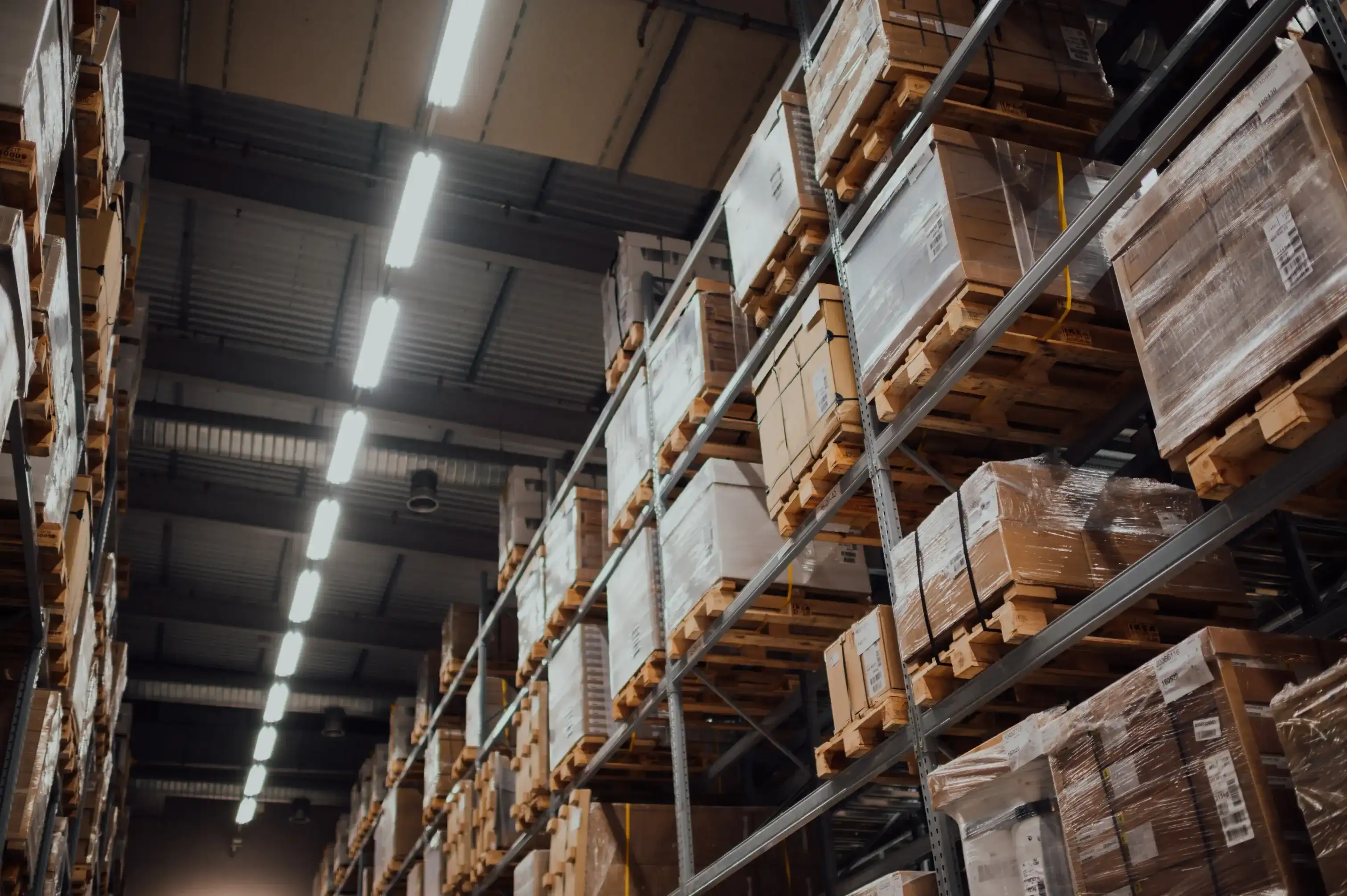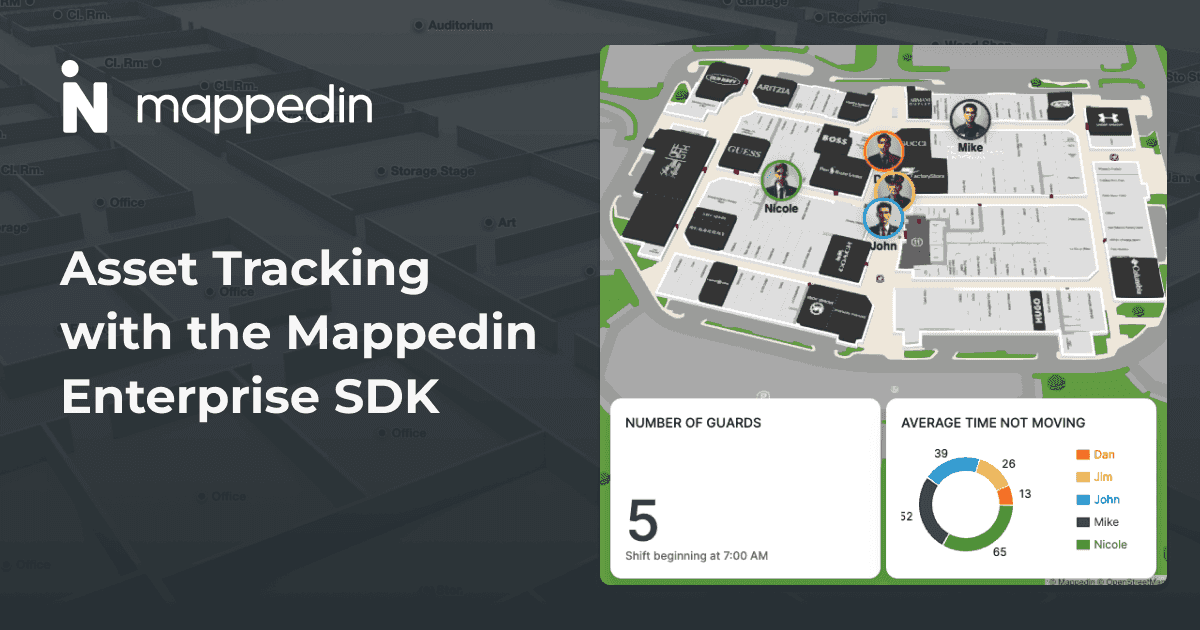Start Here
Indoor mapping combined with positioning technology enables real-time asset tracking byusing interactive 3D maps that visualize and locate inventory, equipment, and other assets using tags, beacons, and blue dot navigation. Key applications include warehouses for inventory management and operational efficiency, hospitals for medical equipment tracking and resource allocation, offices for workplace management, and airports for equipment placement optimization and safety monitoring.
Asset tracking provides building owners and operators valuable information to streamline their business operations and increase efficiencies. Paired with a digital indoor map, asset tracking and management is taken to the next level by creating new efficiencies and experiences. Keep reading to find out more about this valuable solution and how you can implement it to benefit your business.
How indoor maps power asset tracking
Indoor mapping providers help you truly visualize your building and everything it has to offer by converting your 2D floor plans into a 3D map. Through digitization, visualizations are interactive, and allow you to pan, rotate, zoom, and explore the entirety of your indoor space. Physical locations within a building are placed according to real world locations, providing an accurate visual representation of all points of interest and their associated location data. This enables your business to visualize and locate your assets on a map, and paired with indoor positioning technology, you can navigate to them, monitor their movement, assess their performance, and much more.
Using IPS to track assets
Indoor positioning systems (IPS) complements indoor mapping, and together they create a powerful indoor navigation system that provides additional context to users and allows you to track assets in real-time. While the map provides a visual understanding of how assets are distributed in your building or company, indoor positioning systems, such as a tag or beacon system, can detect real-time locations to determine the coordinates of people or assets. For instance, indoor positioning can be used for asset tracking by placing tags on anything from heavy machinery to small bins of items.
This allows you to view the location and movement of assets on the indoor map in real-time, and use blue dot wayfinding to quickly find its whereabouts. This is especially useful in large and complex facilities, or buildings with a lot of equipment or assets to manage. Similarly, this technology can be used to track personnel with “on-device” systems accessed directly through your mobile device. Insights can then be leveraged to understand the flow of your building, equipment usage, assets requiring frequent maintenance, and other location based analytics that can help you make informed business decisions.
What assets can be tracked?
Not only can assets such as inventory or machinery be tracked, but asset tracking can involve anything in an indoor space, including amenities and people. Documents, employees, building material, equipment, you name it. Indoor location tracking and positioning can significantly increase efficiencies and reduce errors, thus anything that provides valuable insights for your business is beneficial to track. Indoor spaces such as hospitals, warehouses, offices, and even buildings under construction can leverage IPS to track important assets. The use cases are endless, and we will be exploring this shortly.
SDKs for asset tracking and management
Now that we’ve talked about the value of indoor mapping and indoor positioning for visualizing and tracking assets, and the different points of interest that can be tracked, let’s explore how this solution comes together with mapping SDKs.
To get started, you must choose a trusted indoor mapping provider to help create your map, compile a list of assets and points of interest you want to track in your building, and then begin creating your own custom experience with SDKs. Mappedin’s SDKs encompass a wide variety of components and features required to integrate mapping into a website, mobile application, or custom directory, and enable our clients to build reliable and accurate asset tracking experiences around an indoor map.
Using the SDKs, you can pinpoint specific coordinates on the map that correspond with the assets you want to track and manage, and place a custom marker or icon on those locations. Then you can connect this data to the asset tracking or asset management system used by your business. While this system is not provided by the indoor mapping provider, companies such as Mappedin provide developer support to seamlessly integrate this system onto the map. You can then layer on additional experiences, such as a reservation system or workplace management system, to maximize the use of your assets.
Asset tracking use cases
Warehouses
Tracking your assets with digital maps is extremely useful in complex facilities such as warehouses. Most facilities already have a warehouse management system in place to support and optimize warehouse functionality, distribution centre management, and the overall supply chain. What is missing, however, is the ability to visualize this location data within the context of the venue. That's where indoor maps come in.
Digital indoor maps combined with an indoor tracking solution and warehouse management system provides solutions for improving operations and increasing efficiencies. You can monitor real-time tracking updates of inventory, machinery, employees, warehouse pallets, and other assets, within the context of the venue. This allows you to maintain end-to-end visibility of all your assets; from large pieces of machinery to small storage bins. Using their mobile devices, employees can easily locate and populate the most efficient route to the equipment or products they need; simplifying picking and packing processes and saving valuable time in day-to-day operations.
Warehouses can also leverage asset data analytics to gain insight into equipment usage and performance. For instance, you can see which equipment is being used the most and will require frequent maintenance, and better understand the flow of the warehouse to determine if there’s a more efficient way to assign equipment based on the spacing of the venue or preferred method of picking and packing. In addition, you can visualize accurate inventory levels on the map by indicating high levels of stock as green and low levels as red.

Hospitals
Indoor positioning technology can be used for asset tracking in healthcare spaces, such as hospitals, to locate the exact positioning of personnel, assets, and equipment movements in real-time. With medical equipment constantly moving around the hospital, a tracking system makes it easy for healthcare workers to visualize and locate the medical assets they need to assist their patients. Even more, blue dot enables employees to calculate the quickest route to the asset, saving valuable time that would otherwise be spent searching in these large, confusing facilities.
Management teams can keep track of hospital beds and other resources as well, and use this information to allocate resources more efficiently. Moreover, they can keep track of occupancy levels in specific zones of the hospital, and visualize room cleaning schedules to enhance safety measures. For instance, management can monitor the number of people in a room, and once 10 people have gone in and out, the room can be highlighted in red to signify that a cleaning is required.
Offices
With asset tracking in offices, employees can keep stock of their appliances and visualize where items are placed or where employees are located, helping to increase efficiency within the company. Additionally, workplace applications can be integrated into mapping applications to better manage and track building assets, monitor and optimize space utilization, and more. For instance, managers can track fax machine utilization by area, and reallocate resources accordingly.
Moreover, reservation systems can be layered onto the map to allow employees to reserve assets or spaces, such as devices and books, or meeting rooms and parking spots. Furthermore, Contact Monitoring can be used to track and notify employees if they have been in close contact with someone who tested positive for Covid-19, increasing workplace safety.
Airports
Indoor maps with asset tracking can also be implemented in transportation hubs, such as an airport, so that employees can monitor equipment and ensure that trolleys, wheelchairs, and all other assets are easily accessible to travellers. Airport management systems can track if an asset hasn’t been used in a while, and can use this information to move its placement to a more optimal location. Moreover, employees can track an equipment’s usage to gauge the required maintenance of each item.
With a visualization of people and assets in the airport in real-time, management can ensure the safety of visitors and travellers at all times. For instance, they can track routes of security personnel to ensure that all areas of the airport are covered, and enable them to locate the closest fire extinguishers, defibrillators, and more.
Get in touch to learn more
Overall, indoor mapping provides value to asset tracking by equipping building owners and operators with a visual understanding of how assets are distributed in the building or company. Combined with IPS, you can navigate to them, monitor their movement, assess their performance, and make data-driven decisions to benefit your business.
To learn more about this solution, or how you can make the most out of indoor space and assets, contact us today.
Share



